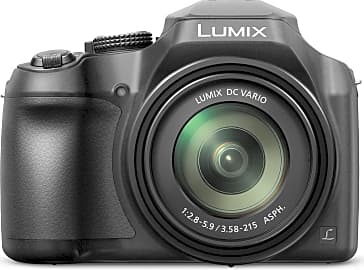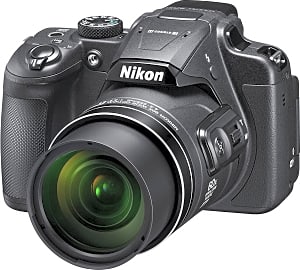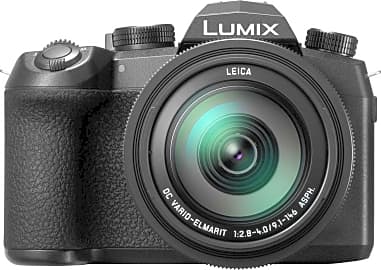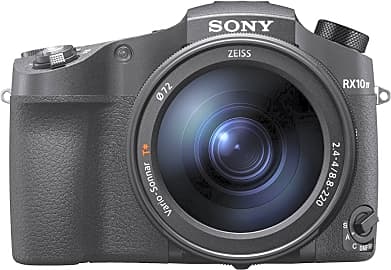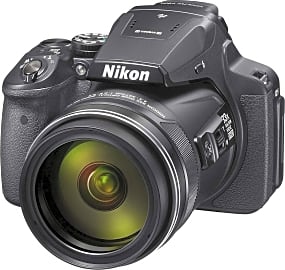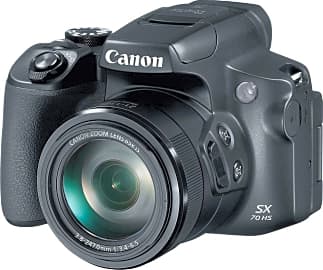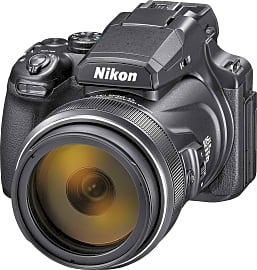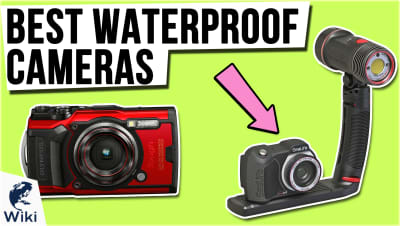The 10 Best Bridge Cameras

This wiki has been updated 38 times since it was first published in June of 2015. Ideal for anyone who's exploring photography at a higher level than just snapping pics on their phone, but who isn't quite ready to invest in an expensive DSLR system, these bridge cameras offer excellent image quality, convenience, and nearly all the features found on more professional models. As a bonus, fixed lenses are allowed in more music and performance venues than interchangeable ones are. When users buy our independently chosen editorial choices, we may earn commissions to help fund the Wiki.
Editor's Notes
January 05, 2021:
We decided to omit the Sony DSC-RX10 III, not because it isn't a great camera - it is - but because the price difference between it and the Sony Cyber-Shot RX10 IV is so little at this point, that if you're willing to drop that much on a fixed-lens model, you should just go with the more advanced one. In the past, it was worth choosing the less expensive Mk III version, but not any more.
We added the Nikon COOLPIX P900, which isn't the most advanced, but for its moderate cost, its 83x telephoto reach lens is quite impressive. You'll notice that the Panasonic Lumix FZ80 and Lumix FZ2500 still top our list, and there are others from the Lumix line present as well, and that's no mistake; Panasonic's mid- and upper-mid-range options continue to outperform much of their competition.
June 21, 2019:
The Sony RX10 was basically the first of its kind, ushering in an era of 20-megapixel super-zoom cameras with fixed lenses that are simpler to use than their more expensive mirrorless relatives. The third and fourth generations of that pioneer are to this day excellent choices if you want to graduate from point-and-shoot models. But, to be frank, if you're going to shell out that much for a bridge camera, you may just want to consider springing for a true DSLR. On the other hand, the MKIII is still a very, very good option, and its price has dropped slightly in the past year.
In the rest of the field, the CoolPix P1000 has replaced the 900 as one of the top super-zoom models, and with an optical multiplier of 125, it's just about tops in that category. The Powershot SX70 is also an upgrade, featuring an enhanced OLED viewfinder and a resolution increase of 4 megapixels. The Lumix FZ1000 moved to MkII, gaining a touchscreen as well as bumping its 8-megapixel shooting up to 30 FPS from 12, and seeing a slight price increase. But given its overall value, we still think the Lumix FZ80 is one of the top choices, especially for those just getting into photography, while more serious users would be well-served to check out the FZ2500, especially if they're interested in filming any kind of movie.
Over The Bridge
Fortunately, the industry is sensitive to this perspective, and they've created a whole category just for you that we call bridge cameras.
Whether it was a personal moment with a photograph you took on your phone or with a small point-and-shoot camera, or a consistent accumulation of likes and positive comments on the pictures you post to social media, there was a point at which you said to yourself, "You know what? I'm a pretty good photographer."
Perhaps you've long harbored dreams of making a career in the art, as difficult as that can be. Maybe you just want to test your mettle behind the lens of something more substantial, something over which you can exert total photographic control.
Well, when you got around to researching more professional cameras, particularly D-SLRs and D-SLMs, you'd find that even the least expensive of these kits are not exactly cheap, that they're a little on the bulkier side, and that they may prove a little too intimidating right out of the gate.
Fortunately, the industry is sensitive to this perspective, and they've created a whole category just for you that we call bridge cameras. Essentially, a bridge camera takes all the ease of point-and-shoot photography and places it in a body that feels a lot more like that of a professional digital camera. Their lenses are fixed in place, and they tend to have a long optical zoom function, so you don't have to worry about carrying around extra lenses or swapping them out in the field like you do with the fancier interchangeable lens systems.
Most of the bridge cameras on our list give you a chance to get a feel for manual zoom operation on the barrel of the lens, and some of them even offer manual focus controls if you want to challenge yourself.
Once you've gotten comfortable with the feel of a larger, more interactive system in your hands, you can start to deactivate a lot of the automatic functions of the camera, slowly experimenting with manual control over things like shutter speed, aperture, and ISO sensitivity, at whatever pace you like, until you begin to learn how each affects your photos.
The Myth Of The Megapixel
When you compare cameras online–and this holds true for everything from the most expensive D-SLR to the cameras on cell phones–one of the first specs you'll see in big, bold fonts on every website and piece of packaging material associated with the camera, is its megapixel count.
What if you wanted to use four half-gallon buckets instead of one two-gallon bucket though?
A pixel is a little spot on your camera's light sensor that responds to whatever intensity of light it reads with a specific electrical signal that your camera decodes into a corresponding pixel in its image. The more pixels you have, the more tiny slices of information your camera has at its disposal to stitch together, making it so the seams between pixels become less and less visible. Such an image is normally referred to as having greater resolution. A 4K television has greater resolution than an HDTV because it has four times as many pixels packed into the same screen size.
Here's where things get tricky, though, so I'll stick to the TV metaphor for a second to clarify. A 4K TV has exactly 8,294,400 pixels, no matter the screen size. A 51" screen and a 60" screen theoretically have the same resolution, even though the pixel size, or pixel pitch in photography, is different.
Now, imagine that each pixel on your camera sensor is it's own little bucket, and that you've got a bunch of blue paint (representing light) that you want to pour into the bucket. If you have a gallon of paint and the bucket can hold two gallons, you'll be fine.
What if you wanted to use four half-gallon buckets instead of one two-gallon bucket though? Then, you could advertise that you have four times as many buckets than the guy using only one, without ever coming clean about the size. What's more, when you try to pour that one gallon of paint evenly into each of the four smaller buckets, there's bound to be some spillage where the buckets make contact with one another. The whole affair is much sloppier.
Ideally, if you wanted to use more buckets, you'd just use four two-gallon buckets. The problem there is that it takes up more space, so your sensor would have to get bigger. Sensor size is, in fact, a greater determining factor of over all image quality (an umbrella under which resolution is only one variable) than your bucket count. So, as you peruse our list, try not to get wooed too hard by the megapixels.
A Bridge Is Born
Digital photography is still a relatively new technology. The first camera to use an image sensor we might recognize today came out of the Kodak labs in 1975, shot a mere 10,000 pixels (0.01 MP), took about 23 seconds to record an image, and wrote those images to cassette tape. Not exactly cutting edge by today's standards, but we wouldn't have today's standards without it.
After a few commercial attempts to bring digital photography to the masses in the early 1990s, Nikon released its D1 in 1999, offering digital photography with interchangeable lenses at a professional level.
As these gained popularity, manufacturers of point-and-shoot digital cameras saw an opportunity to cater to a market of shooters who either couldn't afford the investment in an interchangeable lens system, or who weren't sure that that level of photography was really for them. Thus, in the early 2000s, the bridge camera came into being.


